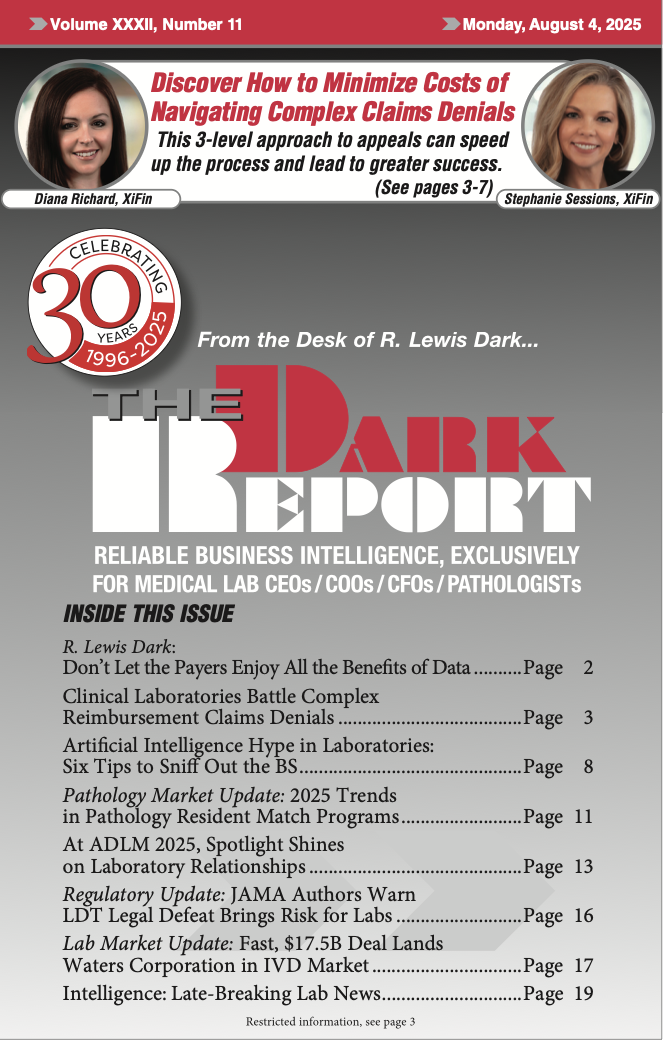TAG:
SARS-CoV-2
Severe acute respiratory syndrome coronavirus 2 (SARS-CoV-2) is an acute respiratory virus. This virus causes a respiratory disease called COVID-19 and was the genesis of a global pandemic that lasted from March 11, 2020, to mid-2022.
COVID-19 typically produces minor symptoms in most people, particularly people who have received a vaccination or are in good health. In a small percentage of individuals, however, COVID-19 causes severe symptoms that include respiratory failure, sepsis, and multiple organ dysfunction syndrome, making it potentially deadly. SARS-CoV-2 infection does not always cause COVID-19 and is asymptomatic in some individuals.
SARS-CoV-2 spreads from person to person through droplets released when an infected person coughs, sneezes, or talks. It may also be spread by touching a surface with the virus on it and then touching one’s mouth, nose, or eyes, although this method of transmission is rarer. During the COVID-19 pandemic, attempts to slow or stop the spread of SARS-CoV-2 resulted in lockdowns, masking, social distancing, and several other infection prevention measures.
Clinical discussions aside, the emergence of SARS-CoV-2 introduced sweeping social and business changes in the U.S. and elsewhere:
- Many students in the U.S. attended school remotely from home for months or longer during the height of the pandemic.
- City and state governments temporarily banned large-scale, in-person events.
- Business and leisure travel ground to a near halt for a time.
- A historically significant unemployment spike in occurred in 2020.
- The “Great Resignation” saw many workers leave their jobs to retire early or seek more rewarding occupations.
The origins of SARS-CoV-2 continues to be debated. One theory holds that the virus originated from a biological laboratory in Wuhan, China. There is evidence that NIH-funded, gain-of-function research was being performed on coronaviruses in this laboratory, and some evidence suggests that a laboratory accident may have released SARS-CoV-2 into the public. The other major theory holds that SARS-CoV-2 jumped to humans from an infected animal sold at a wet market in Wuhan, China.
Since its original entry into human circulation, SARS-CoV-2 has undergone several mutations. This led to multiple variants of SARS-CoV-2 that were prevalent at different points in the COVID-19 pandemic. The main SARS-CoV-2 variants include:
- Alpha (B.1.1.7), which appeared in November 2020 and was eventually displaced by the Delta variant.
- Beta (B.1.351), which was identified in late 2020 in South Africa. Beta spread to many countries but was never common in the U.S.
- Delta (B.1.617.2), which emerged in late 2020 and became the dominant strain worldwide until displaced by the Omicron variant.
- Omicron (BA.1), which was first identified in November 2021 and, as of August 2022, is the dominant strain of SARS-CoV-2.
While technically SARS-CoV-2 refers to a virus and COVID-19 refers to the disease the virus causes, these terms have become interchangeable. This has led to terms like “asymptomatic COVID-19” and “COVID-19 testing” gaining widespread use despite being technically incorrect.
The COVID-19 pandemic had a profound impact on clinical laboratories, generating a huge demand for SARS-CoV-2 testing throughout the world.
SARS-CoV-2 testing primarily includes:
- Molecular testing, which detects the presence of the genetic material of SARS-CoV-2. Polymerase chain reaction (PCR) tests are an example of molecular diagnostics.
- Antigen testing, which looks for components of SARS-CoV-2 that elicit an immune response. Antigen tests became popular at-home testing options during the pandemic.
The increased demand for SARS-CoV-2 testing led to many new clinical laboratories coming into operations, many of which focused exclusively on such testing. As the demand for SARS-CoV-2 testing declines, these labs are having to pivot to new business models or close their doors.
Clinisys CEO Discusses Strategic Changes Labs Need to Make
By Robert Michel | From the Volume XXX, Number 15 – October 23, 2023 Issue
“Today, we predict that the next storm is about ready to happen, and it will involve clinical laboratories and anatomic pathology practices.” —Michael Simpson CEO SUMMARY: In this exclusive Q&A with The Dark Report, Clinisys CEO Michael Simpson describes the …
IVD Companies Launch New Assays, Analyzers, Automation
By Donna Pocius | From the Volume XXX, No. 12 – August 21, 2023 Issue
Steep declines in SARS-CoV-2 test revenue were reported by the top in vitro diagnostics (IVD) companies in Q2 2023 earnings compared to a year earli…
2022 Ranking of the World’s Top 12 IVD Corporations
By Scott Wallask | From the Volume XXX, No. 11 – July 31, 2023 Issue
WHILE THE TOP FOUR IN VITRO DIAGNOSTICS (IVD) MANUFACTURERS kept their collective hold on the market compared to 2021, the big surprise was that Thermo Fisher Scientific’s…
June 19, 2023, Intelligence: Late-Breaking Lab News
By Scott Wallask | From the Volume XXX, No. 9 – June 19, 2023 Issue
Lighthouse Lab Services in Charlotte, North Carolina, recently released survey results in which 52% of respondents indicated they were overworked relative to their positions; 33% described their wor…
CMS Ends Remote Reading of Pathology Glass Slides
By Scott Wallask | From the Volume XXX, No. 8 – May 30, 2023 Issue
CEO SUMMARY: On the day the federal government ended the public health emergency for SARS-CoV-2, CMS issued an updated FAQ that ended the allowance for remote reviews of glass slides…
Despite COVID-19 Losses, IVD Executives Remain Upbeat
By Donna Pocius | From the Volume XXX, No. 8 – May 30, 2023 Issue
Continuing declines in COVID-19 test revenues was a common theme during the first quarte…
What’s Next in 2023 for Clinical Laboratories?
By R. Lewis Dark | From the Volume XXX, No. 6 – April 17, 2023 Issue
AS YOU OPEN THIS ISSUE OF THE DARK REPORT, in New Orleans, about 900 senior lab administrators, executives, and pathologists will be gathered at the 28th annual Executive War College on …
April 17, 2023, Intelligence: Late-Breaking Lab News
By Scott Wallask | From the Volume XXX, No. 6 – April 17, 2023 Issue
There may soon be a new name for the well-known American Association for Clinical Chemistry (AACC). The proposed new name is Association for Diagnostics & Laboratory Medicine (A…
Enzo Biochem’s Lab Business Sold to Labcorp for $146M
By Scott Wallask | From the Volume XXX, No. 5 – March 27, 2023 Issue
COMMERCIAL LABORATORY CONSOLIDATION CONTINUES, this time with news earlier this month that New York City-based Enzo Biochem agreed to sell its clinical laboratory business to Labcorp. The deal points to the problem many clinical laboratori…
Sanford Health to Merge with Fairview Health Services
By Robert Michel | From the Volume XXX No. 4 – March 6, 2023 Issue
CEO SUMMARY: It’s the latest example of a merger involving two big integrated delivery networks (IDNs). Sanford Health in South Dakota inked an agreement to merge with Fairview Health Services in Minneapolis. This deal confirms the growing trend of consolidation among multi-hospit…
CURRENT ISSUE

Volume XXXII, No. 11 – August 4, 2025
The Dark Report takes a look at new and more complex claims denials by payers, and suggests ways to battle this trend. Also, we offer 6 expert strategies for properly evaluating claims made by AI vendors.
See the full table of contentsHow Much Laboratory Business Intelligence Have You Missed?
Lab leaders rely on THE DARK REPORT for actionable intelligence on important developments in the business of laboratory testing. Maximize the money you make-and the money you keep! Best of all, it is released every three weeks!
Sign up for TDR Insider
Join the Dark Intelligence Group FREE and get TDR Insider FREE!
Never miss a single update on the issues that matter to you and your business.
Topics
- Anatomic Pathology
- Clinical Chemistry
- Clinical Laboratory
- Clinical Laboratory Trends
- Digital Pathology
- Genetic Testing
- In Vitro Diagnostics
- IVD/Lab Informatics
- Lab Intelligence
- Lab Marketplace
- Lab Risk & Compliance
- Laboratory Automation
- Laboratory Billing
- Laboratory Compliance
- Laboratory Equipment
- Laboratory Information Systems
- Laboratory Management
- Lean Six Sigma
- Managed Care Contracts
- Molecular Diagnostics
- Pathology Trends
- People
- Uncategorized

